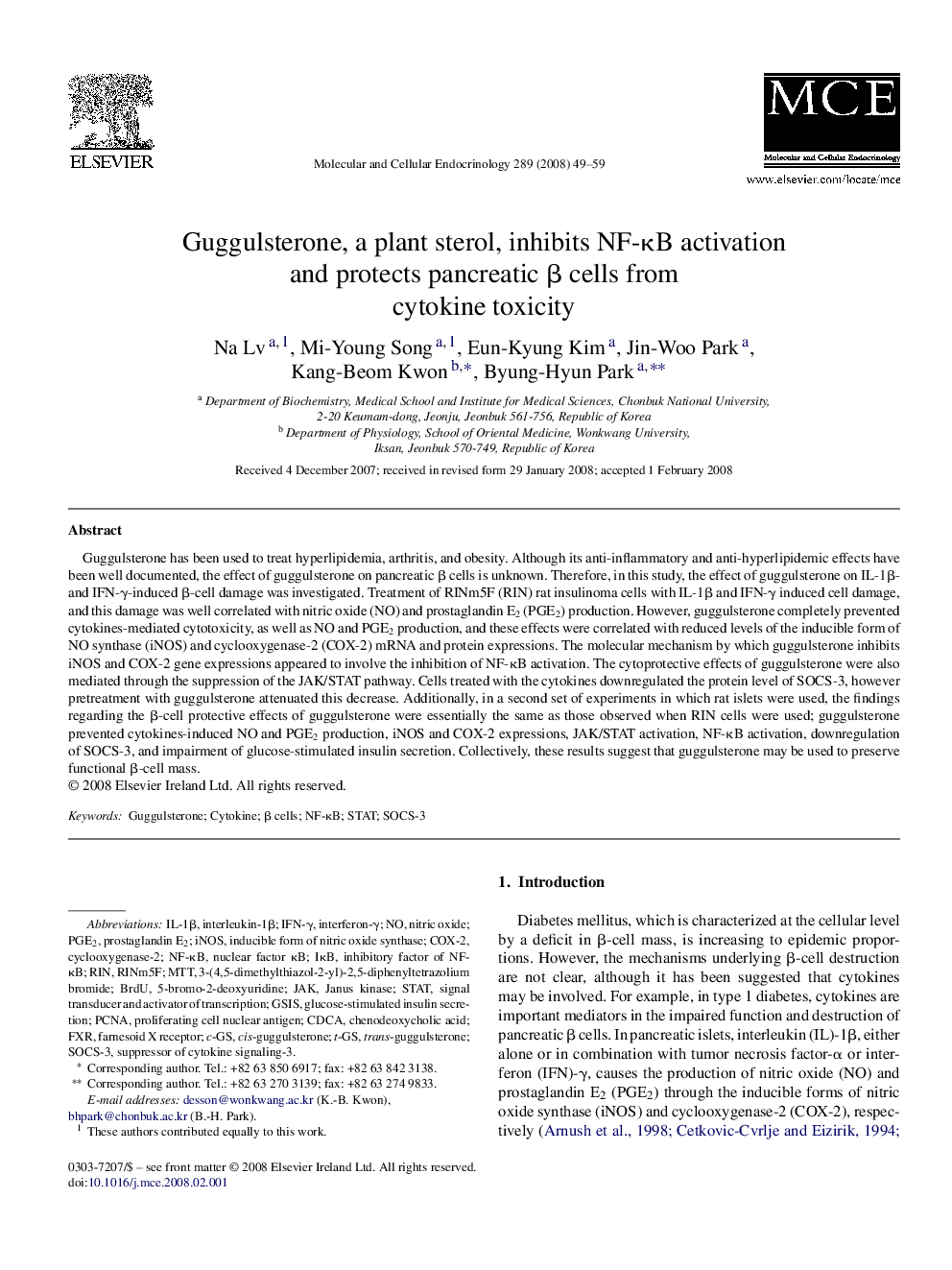| Article ID | Journal | Published Year | Pages | File Type |
|---|---|---|---|---|
| 2197610 | Molecular and Cellular Endocrinology | 2008 | 11 Pages |
Guggulsterone has been used to treat hyperlipidemia, arthritis, and obesity. Although its anti-inflammatory and anti-hyperlipidemic effects have been well documented, the effect of guggulsterone on pancreatic β cells is unknown. Therefore, in this study, the effect of guggulsterone on IL-1β- and IFN-γ-induced β-cell damage was investigated. Treatment of RINm5F (RIN) rat insulinoma cells with IL-1β and IFN-γ induced cell damage, and this damage was well correlated with nitric oxide (NO) and prostaglandin E2 (PGE2) production. However, guggulsterone completely prevented cytokines-mediated cytotoxicity, as well as NO and PGE2 production, and these effects were correlated with reduced levels of the inducible form of NO synthase (iNOS) and cyclooxygenase-2 (COX-2) mRNA and protein expressions. The molecular mechanism by which guggulsterone inhibits iNOS and COX-2 gene expressions appeared to involve the inhibition of NF-κB activation. The cytoprotective effects of guggulsterone were also mediated through the suppression of the JAK/STAT pathway. Cells treated with the cytokines downregulated the protein level of SOCS-3, however pretreatment with guggulsterone attenuated this decrease. Additionally, in a second set of experiments in which rat islets were used, the findings regarding the β-cell protective effects of guggulsterone were essentially the same as those observed when RIN cells were used; guggulsterone prevented cytokines-induced NO and PGE2 production, iNOS and COX-2 expressions, JAK/STAT activation, NF-κB activation, downregulation of SOCS-3, and impairment of glucose-stimulated insulin secretion. Collectively, these results suggest that guggulsterone may be used to preserve functional β-cell mass.
